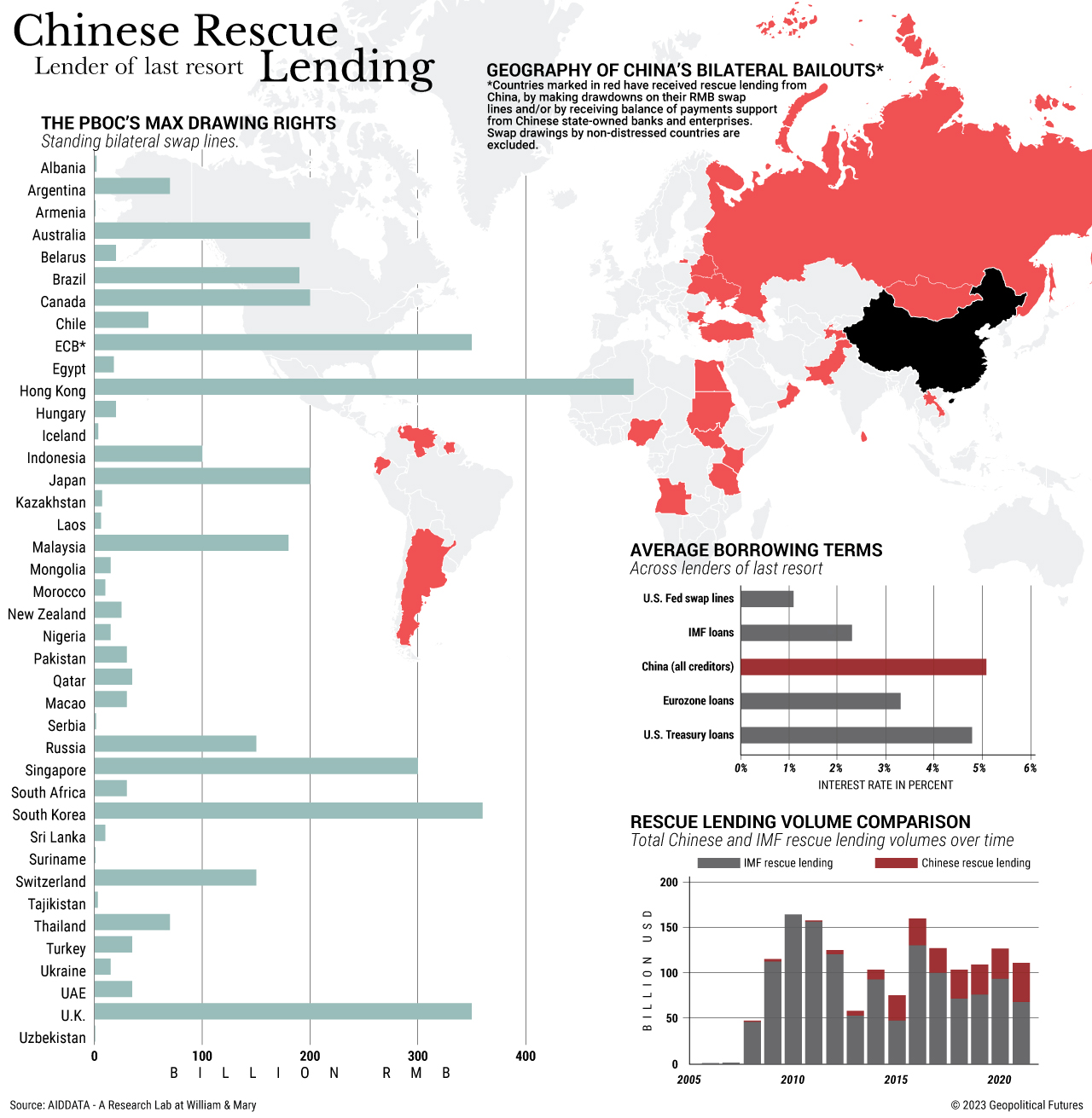- Luật
- Hỏi đáp
- Văn bản pháp luật
- Luật Giao Thông Đường Bộ
- Luật Hôn Nhân gia đình
- Luật Hành Chính,khiếu nại tố cáo
- Luật xây dựng
- Luật đất đai,bất động sản
- Luật lao động
- Luật kinh doanh đầu tư
- Luật thương mại
- Luật thuế
- Luật thi hành án
- Luật tố tụng dân sự
- Luật dân sự
- Luật thừa kế
- Luật hình sự
- Văn bản toà án Nghị quyết,án lệ
- Luật chứng khoán
- Video
- NGHIÊN CỨU PHÁP LUẬT
- ĐẦU TƯ CHỨNG KHOÁN
- BIẾN ĐỔI KHÍ HẬU
- Bình luận khoa học hình sự
- Dịch vụ pháp lý
- Tin tức và sự kiện
- Thư giãn

TIN TỨC
fanpage
Thống kê truy cập
- Online: 223
- Hôm nay: 198
- Tháng: 1621
- Tổng truy cập: 5245625
China as a Lender of Last Resort
Beijing's high interest loans have been criticized for creating “debt traps” for cash-strapped borrowers.

China has become a major rescue lender for heavily indebted countries. In 2022, loans to countries in debt distress accounted for 60 percent of China’s overseas lending portfolio – up sharply from just 5 percent in 2010.
Over the past two decades, Chinese institutions have provided $240 billion in rescue lending to 22 developing countries. Of that sum, $170 billion was provided through the People’s Bank of China’s swap line network – a system whereby central banks agree to exchange currencies. The rest was offered through other means such as bridge loans or balance of payments support by Chinese state-owned banks and enterprises, including the China Development Bank. They’re provided, generally with high interest rates, mostly to middle-income countries, which account for four-fifths of China’s overall lending. Low-income countries are given grace periods and maturity extensions.
However, these loans, often doled out as part of China’s Belt and Road Initiative, have been highly criticized for creating “debt traps” for cash-strapped borrowers. Countries like Sri Lanka, Zambia and Ghana are currently in talks with Beijing to restructure their debt. But as more governments struggle to make payments amid a global downturn, there’s growing concern about China’s ability to refinance the loans and avoid financial problems at home if debtors can’t repay them.
Các bài viết khác
- Vài nét Dự báo thời đại phục hưng và khai sáng của loài người sau đại dịch Corona-2019.7-2021(khởi đầu từ tháng 9 năm giáp thìn 2024) (25.06.2021)
- Từ sự kiện Tổng biên tập báo TIME Greta Thunberg là Nhân vật của năm 2019 đến báo cáo Biến đổi khí hậu Phúc trình của IPCC báo động đỏ cho nhân loại 82021 (15.01.2020)
- The Technology of Taming Weapons (10.04.2023)
- European Economies Limp into 2023 (10.04.2023)
- 10 ông lớn dẫn đầu ngành bất động sản Việt Nam hiện nay là ai? (10.04.2023)


















































 Yahoo:
Yahoo: 